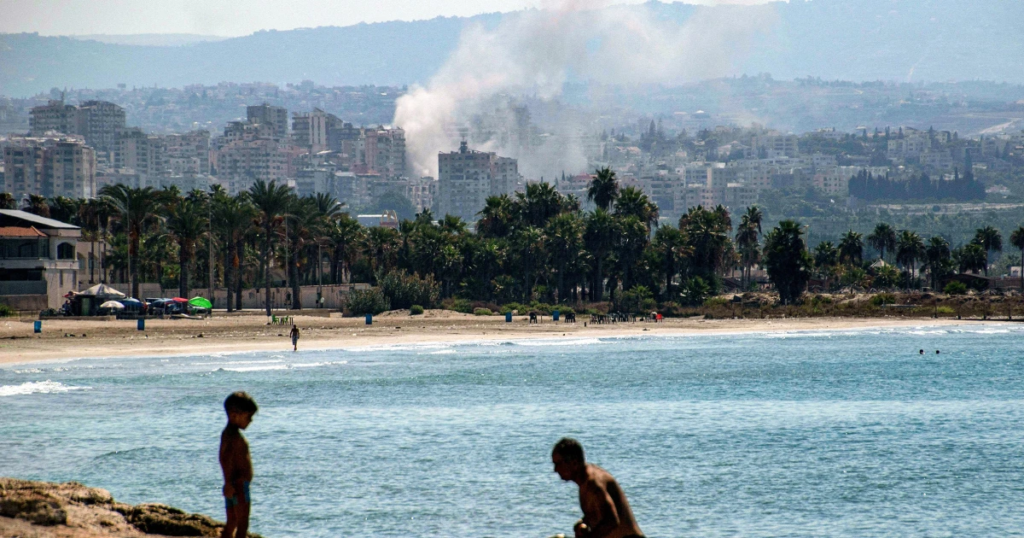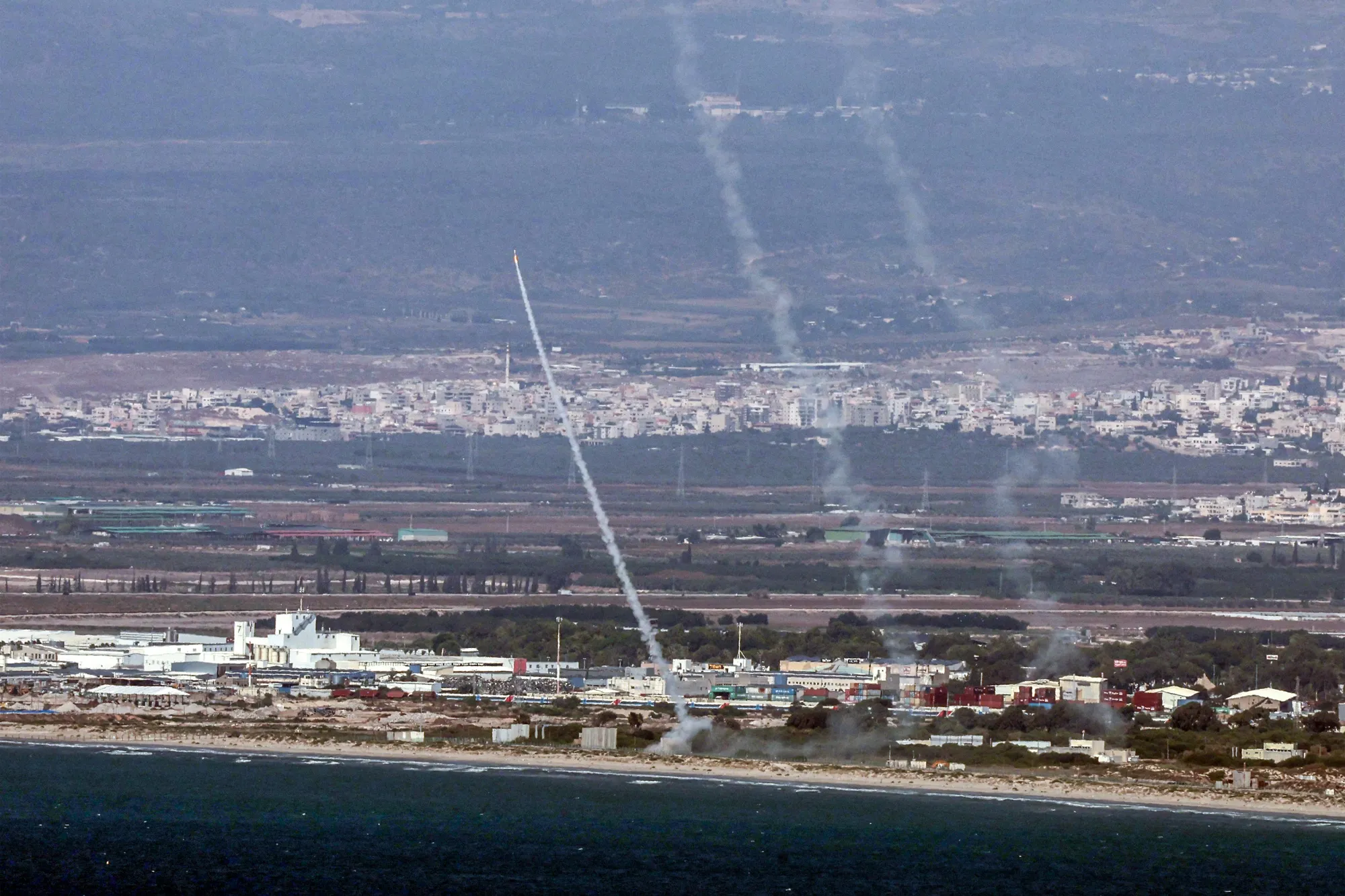Hezbollah has made headlines once again by launching a ballistic missile targeting the headquarters of Mossad, Israel’s intelligence agency, near Tel Aviv. This bold move comes amid heightened cross-border tensions between Lebanon and Israel.
The ongoing conflict has seen both sides ramping up their military operations, with Hezbollah striking deeper into Israeli territory and Israel responding with heavy airstrikes on Lebanon.
The recent missile attack marks the first time Hezbollah has claimed to have reached central Israel from Lebanon, showcasing its growing military capability in the face of ongoing hostilities.
Hezbollah’s Growing Role in the Conflict
Hezbollah’s involvement in the current conflict is not new, but the escalation in the intensity of their attacks has been notable. Hezbollah launched a surface-to-surface missile that targeted the Mossad headquarters in Tel Aviv, which was intercepted by Israeli air defense systems.
Read : Cristiana Barsony Arcidiacono: PhD Holder Linked to Hezbollah Pager Blast
The missile, identified as a “Qader 1,” was fired early in the morning on September 25, 2024, according to Hezbollah’s statement. The group justified the strike as an act of support for the people of Gaza and a defense of Lebanon.
This marked Hezbollah’s first ballistic missile strike since October, when its involvement in the war on Gaza triggered hostilities with Israel.
Read : Iran-Backed Hezbollah Launches Largest Air Attack in Israel
The significance of Hezbollah targeting Mossad cannot be understated. The group claims that the Mossad headquarters it aimed for was responsible for orchestrating recent attacks using pagers and other wireless devices to coordinate military activities.

While Israeli sources have not confirmed the extent of the damage, the missile strike serves as a clear message from Hezbollah about its ballistic missile capability. This single missile strike could be seen as a demonstration of Hezbollah’s strength and resilience, signaling that it remains a formidable force in the region.
Israel’s Response to Hezbollah’s Attack
In retaliation for the missile strike, Israel launched a series of airstrikes in Lebanon, targeting the missile launch site and other Hezbollah positions. Israel’s military confirmed that their missile defense system successfully intercepted the projectile, preventing any damage or casualties in central Israel.
Despite this, the Israeli military’s swift and intense response illustrates the growing concern over Hezbollah’s military power and the potential for further escalation.
The Israeli Air Force stated that it targeted the missile launcher in the Nafakhiyeh area of Lebanon, striking with precision to neutralize the threat. Alongside this, Hezbollah also launched attacks on the Golan Heights, an occupied Syrian territory, as well as areas near Mount Carmel in northern Israel.
While Israeli defense systems managed to intercept these rocket and drone attacks, the frequency and intensity of the exchanges between Hezbollah and Israel have increased significantly in recent days.

Israel’s airstrikes on Lebanon continued throughout the day, with the military reporting that 250 fighter jets dropped over 2,000 munitions in four waves of attacks.
This campaign has been described as one of the largest in Israel’s history, reflecting the seriousness of the situation and the lengths to which Israel is willing to go to defend itself from Hezbollah’s threats. The recent strikes have also raised concerns about a broader regional conflict, particularly as Hezbollah and other Iran-backed groups join forces against Israel.
The Broader Implications of Hezbollah’s Attack
Hezbollah’s actions and Israel’s military response are raising concerns of a potential full-scale war. As the focus of Israel’s military efforts shifts from Gaza to Lebanon, fears are growing that the conflict could expand, drawing in more regional actors.
Hezbollah, backed by Iran, has long been a significant player in the Middle East’s geopolitical landscape, and its involvement in this conflict adds another layer of complexity to the situation.
Hezbollah’s missile strike serves as a reminder of the group’s significant military capabilities. Although only one missile was fired, its interception was a key moment for Israel, highlighting the risk of its missile defense systems being overwhelmed by larger, more coordinated attacks.
The potential for Hezbollah to launch more ballistic missile strikes in the future is a growing concern for Israel, especially as the conflict continues to unfold.

Lebanon, meanwhile, is experiencing some of the deadliest violence in recent history. The Lebanese Ministry of Public Health reported that Israeli airstrikes killed at least 558 people on Monday, the deadliest day of violence in Lebanon since the country’s civil war between 1975 and 1990.
The toll of the conflict is mounting, with hundreds more wounded and tens of thousands forced to flee their homes. Hezbollah’s missile strike, along with Israel’s retaliatory strikes, is contributing to an already dire humanitarian situation in the country.
The escalation between Hezbollah and Israel has the potential to ignite a larger regional conflict. With Iran-backed groups from across the Middle East aligning with Hezbollah, the conflict could easily spread beyond Lebanon and Israel.
The longer the war on Gaza drags on, the more likely it becomes that the entire region could be pulled into the fighting. Hezbollah’s missile strike may be just one act in a much larger and more dangerous drama playing out in the Middle East.
Hezbollah’s missile strike on the Mossad headquarters near Tel Aviv marks a significant moment in the ongoing conflict between Lebanon and Israel. As Hezbollah flexes its military capabilities, Israel is responding with heavy airstrikes, escalating tensions and raising the risk of a broader regional conflict.
The missile strike, while intercepted by Israeli defense systems, sends a clear message that Hezbollah remains a powerful force capable of striking deep into Israeli territory.
As the conflict continues, both sides are preparing for the possibility of further escalation. Israel’s military focus has shifted from Gaza to Lebanon, and Hezbollah’s involvement adds a new dimension to the war.
While the full extent of the conflict’s impact remains to be seen, the people of Lebanon are already bearing the brunt of the violence, with hundreds dead and many more displaced.
The coming days will likely reveal whether this conflict will continue to escalate or whether diplomatic efforts can bring an end to the bloodshed.
let’s enjoy few years on earth with peace and happiness….✍🏼🙏

